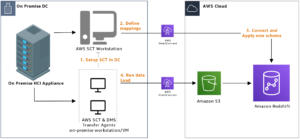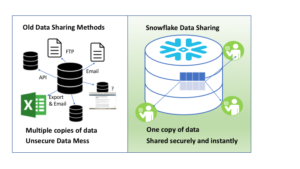Intro - What is Looker?
Looker is a business intelligence software and big data analytics platform that is designed to analyze both structured and semi-structured data. It is ideal to use with Snowflake, as it allows users to analyze data from disparate sources, transform data into knowledge right at query time, and leverage all the power and flexibility of Snowflake directly from Looker. Additionally, it enables users to make sense of all their data with one tool and to chart, graph, format, and explore data in one place. It also allows users to share data via URL, access data wherever they need it, schedule delivery, and export data locally or directly to Google Drive, Dropbox, or S3. Looker is fully embeddable with SSO and has a responsive mobile design.
Looker is the ideal tool to use with Snowflake:
- Analyze both structured and semi-structured data with ease.
- Leave your data in Snowflake, granularly control access from Looker.
- Define business logic to transform data into knowledge right at query time.
- Any data that is shared through the Sharehouse is immediately available in Looker. Known datasets can use Looker Blocks™ and extensions to share a data model as well as data.
- Snowflake’s advanced SQL dialect is rich in features. Leverage all the power and flexibility of Snowflake directly from Looker.
Analyze data from disparate sources:
- Adapt Looker to fit your data.
- Direct connection to any SQL database.
- Virtual, code-based schema applied at query time for flexibility.
- Make sense of all your data with one tool.
Governance:
- Centrally-defined, version-controlled business logic lives for everyone to use.
- Collaboration and versioning with Git.
- Every analyst gets a sandbox.
- Every version of your definitions is easily accessible and implementable.
Give everyone immediate access to information:
- Everyone can self-serve from curated data.
- Connect directly to the database to explore all your data.
- Centrally defined and shared metrics.
Chart, graph, format, and explore data in one place:
- Web-native, interactive visualizations.
- In-browser visualizations.
- Drag & drop to create or edit their dashboards.
- Custom visualizations.
Leverage the Value of Your Data:
- Sharing via URL.
- Access your data wherever you need it (Slack, Salesforce, etc.).
- 100% browser-based.
- Everyone can schedule delivery.
- Export locally or export directly to Google Drive, Dropbox, or S3.
- Fully embeddable with SSO.
- Responsive mobile design.
Conclusion:
In conclusion, Looker is a powerful business intelligence software that is designed to analyze both structured and semi-structured data. It is particularly useful when used with Snowflake, as it enables users to leverage all the power and flexibility of Snowflake directly from Looker. With its ability to analyze data from disparate sources, transform data into knowledge right at query time, and explore and share data in one place, Looker is an ideal tool for businesses looking to make the most of their data.
If you want more news and information on Snowflake updates, be sure to check out our blog.























